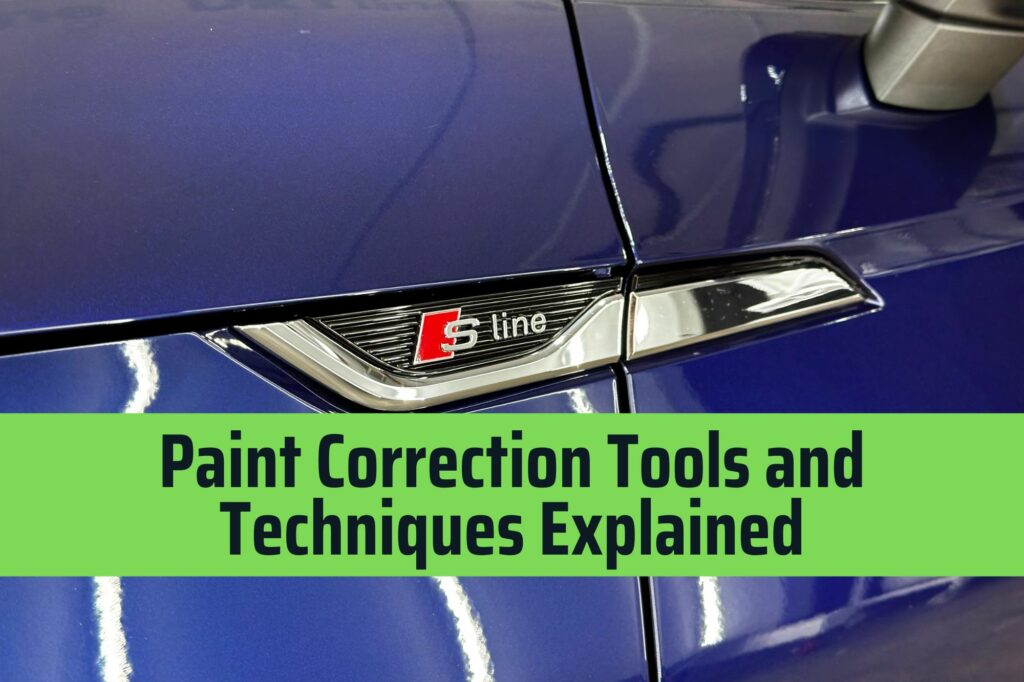
If you care about the appearance of your car, you know how frustrating it can be to see swirl marks, scratches, or oxidation on your vehicle’s paint. Paint correction is the process of removing these imperfections, restoring your car's finish to its original glory. At ProTech Detailing in Phoenix, we specialize in high-quality paint correction, offering our clients a smooth, flawless finish for their vehicles. In this article, we will dive into the essential paint correction tools and techniques, helping you understand the process and why professional detailing makes all the difference.
Before discussing the tools and techniques, it's important to understand what paint correction is. Paint correction is the meticulous process of removing imperfections such as swirl marks, scratches, etching, and oxidation from a car's surface. These imperfections are often caused by improper washing techniques, environmental factors, and general wear and tear. The goal of paint correction is to restore the surface to its original, smooth, and reflective finish.
Many people confuse paint correction with simply polishing a vehicle. However, true paint correction involves removing layers of clear coat or paint to level out imperfections, rather than just covering them up. This process requires advanced skills and specialized paint correction tools to achieve optimal results.
To successfully complete paint correction, professionals use a variety of specialized tools designed for different stages of the process. Below, we outline the essential paint correction tools that every professional detailer uses:
Polishers are one of the most important paint correction tools in any detailer’s arsenal. Polishers come in two main types: rotary and dual-action (DA).
Choosing between rotary and dual-action polishers depends on the severity of the damage and the experience of the technician. At ProTech Detailing, we use both types of polishers depending on the specific needs of the vehicle.
Polishing pads are essential paint correction tools as they are the surface that makes direct contact with the car's paint. Different pads are made for different purposes:
Selecting the right pad for the job is crucial to achieving the best results. The condition of the paint will determine whether a foam, microfiber, or wool pad is used.
Compounds and polishes are abrasive liquids used in conjunction with polishers to cut through imperfections and restore gloss to the paintwork. These products vary in terms of abrasiveness:
Using the right compound or polish is essential for effective paint correction. A skilled detailer knows when to use each product to achieve the desired level of correction without causing unnecessary damage to the paint.
Microfiber towels are indispensable paint correction tools for removing excess compound or polish and cleaning the surface during the detailing process. The soft texture of these towels helps prevent additional scratches and swirl marks from forming as you wipe down the car.
To effectively perform paint correction, detailers need specialized lighting to see every imperfection clearly. LED lights or halogen lamps are used to highlight swirl marks, scratches, and other defects that may not be visible under normal lighting conditions.
A paint thickness gauge is also an important tool to measure how much clear coat is available for correction. This ensures that the technician doesn’t remove too much material, which could compromise the longevity of the paint.
Now that we’ve discussed the essential paint correction tools, let’s dive into the techniques that professionals use to achieve a flawless finish.
Paint correction is typically performed in stages, depending on the severity of the imperfections. Here’s a breakdown of the multi-stage process:
When using paint correction tools like polishers, applying the right amount of pressure and controlling the speed are critical for achieving optimal results. Too much pressure or high-speed polishing can generate heat, potentially damaging the paint. Experienced detailers adjust the pressure and speed based on the condition of the paint and the specific tool being used.
Professional detailers always perform a test spot on a small, inconspicuous area of the car to determine the best combination of compound, polish, pad, and polisher settings. This ensures that the rest of the vehicle will be corrected using the most effective approach.
Although many enthusiasts may attempt to use paint correction tools themselves, achieving professional-level results requires experience and skill. At ProTech Detailing, we use advanced tools, products, and techniques to restore your vehicle’s paint without causing damage. Our team ensures that the paint correction process is tailored to your car’s specific needs, delivering a flawless finish that will last.
Understanding the paint correction process and the tools involved is crucial for maintaining your vehicle’s appearance. Whether you’re dealing with swirl marks, scratches, or oxidation, having the right paint correction tools and techniques ensures that your car will look its best. At ProTech Detailing in Phoenix, we pride ourselves on providing expert-level paint correction services, using high-quality tools and materials to bring out the best in every vehicle. Contact us today to schedule your paint correction appointment and restore the beauty of your car.